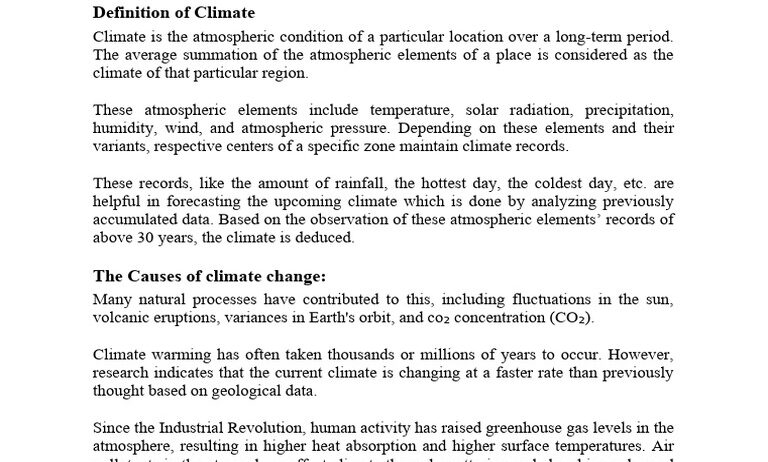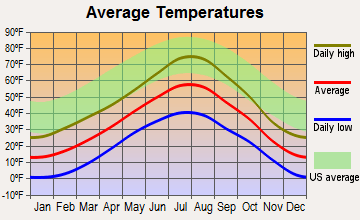When you step outside, do you notice the difference between a sunny day and a cloudy one? Have you ever thought about what contributes to the chilly breeze on a winter morning versus the sweltering heat of a summer afternoon? These observations are examples of weather, and understanding its intricacies can be quite enlightening. But, what about climate? How does it relate to our daily weather patterns? To unravel this, let’s explore the primary differences between these two phenomena in a manner that is both engaging and educational.
The term “weather” refers to the short-term atmospheric conditions in a specific place at a specific time. Picture it as the bustling market of atmospheric activity where all sorts of variables—temperature, humidity, precipitation, wind, and visibility—intermingle dynamically. Weather can change from minute to minute or hour to hour, creating a never-ending variability. It’s the sunny morning that turns into a rainy afternoon, or the unexpectedly frosty night in the middle of spring.
Conversely, “climate” paints a broader picture. It embodies the long-term patterns and average conditions of weather in a particular region over an extended period, typically 30 years or more. Envision climate as a sophisticated tapestry woven from countless strands of weather events. It encapsulates trends like typical rainy seasons, the average temperature range, and seasonal variations. For instance, the Mediterranean climate is known for its hot, dry summers and mild, wet winters, a stark contrast from the humid subtropics characterized by heavy rains and warm temperatures.
Now, here’s a playful question to consider: can you guess how local weather conditions influence the overall climate of a region? The interaction is complex. Weather events are individual threads that contribute to the larger pattern. For a more vivid example: a few sweltering summer days can lead to drought conditions, which, if persistent over years, can alter the climate of an area to a more arid formation. Understanding this interplay is crucial—because our actions today can affect tomorrow’s climate.
The challenge lies in grasping the subtleties between weather and climate. One can argue that misunderstandings about these two terms can hinder discussions about climate change. It’s easy to hear about a snowy winter and dismiss global warming as a myth. However, isolated weather events do not negate the overwhelming evidence of changing climate trends. While one winter may be particularly harsh, climate change indicates that the overall climate of our planet is warming, leading to more extreme weather conditions.
Furthermore, the perception of these differences directly impacts policy decisions. If communities regard weather as synonymous with climate, they may neglect critical actions for climate resilience. For instance, municipalities unprepared for flooding would encounter severe repercussions if they attribute a singular weather event to “bad luck” while overlooking the increasing frequency of such occurrences tied to climate change.
To bolster comprehension, we can encapsulate the distinctions through a metaphor. Imagine weather as the song playing on the radio—captivating and ever-changing with each shift in tune or genre. Climate, however, represents the album—an aggregation of songs that reflects the musical style consistent over time. While you may enjoy a favorite ballad temporarily, the entire album showcases the artist’s overall theme, giving deeper insight into their musical direction.
Delving deeper, there are numerous factors influencing both weather and climate. Geography plays a significant role; mountainous regions experience varying climates than coastal areas. Altitude and elevation can lead to warmer spells while the ocean’s currents dictate temperate variations. Moreover, human activities have left sizeable footprints, impacting climatic conditions drastically. Industrial emissions and deforestation contribute to the greenhouse effect—enhancing warming trends and invoking diverse weather phenomena, from heatwaves to hurricanes.
However, not all hope is lost. Understanding might very well be the first step toward impactful action. Knowledge empowers communities to adapt and innovate. Educating the populace about the disparities between weather and climate can foster a culture of sustainability and environmental stewardship. By leveraging this knowledge, we can act conscientiously, pushing for policies that address longer-term climate issues rather than reacting solely to immediate weather crises.
In conclusion, while we may revel in the immediate pleasure of warm sunshine or the coolness of a gentle breeze, recognizing the intricate dance between weather and climate is vital. Weather ignites daily discussions and immediate responses, but understanding climate fosters a mindful approach to preserving our planet. By appreciating these differences, we can advocate more effectively for responsible stewardship of our environment. The objective is not merely to weather the storm but to cultivate a resilient climate for generations to come. How will you interpret the weather you experience in light of the broader climate story? The answer may pave the way for a sustainable future.






